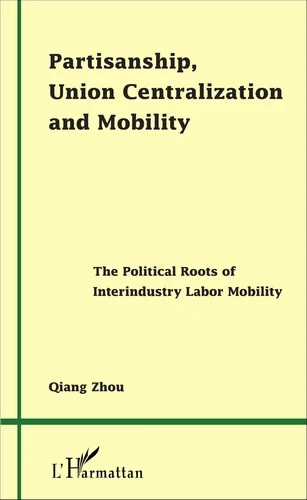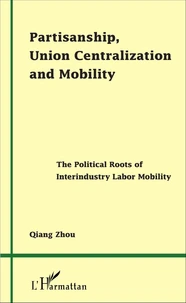Partisanship, Union Centralization and Mobility. The Political Roots of Interindustry Labor Mobility
Par :Formats :
- Paiement en ligne :
- Livraison à domicile ou en point Mondial Relay indisponible
- Retrait Click and Collect en magasin gratuit
- Réservation en ligne avec paiement en magasin :
- Indisponible pour réserver et payer en magasin
- Nombre de pages235
- PrésentationBroché
- Poids0.31 kg
- Dimensions13,5 cm × 21,5 cm × 1,3 cm
- ISBN978-2-343-09222-5
- EAN9782343092225
- Date de parution01/04/2016
- ÉditeurL'Harmattan
Résumé
This book analyzes the relationship between the partisanship of governments and the corresponding levels of interindustry labor mobility (ILM). From a general equilibrium model, the book shows that high levels of ILM induce greater class solidarity among labor owners while weakening the solidarity among capital owners. The reverse holds for low levels of ILM. Left governments would benefit from having a more unified working-class base and would therefore prefer high levels of ILM.
For equivalent reasons, Right governments would prefer low levels of ILM. Such partisan divergences in preferred levels of ILM could, however, be moderated with the strengthening of centralized labor unions, which may substitute the incentives of the Left governments for high ILM while constraining the actions by the Right for low ILM levels. The book develops and tests a series of conditional hypotheses concerning the interaction of government partisanship and union centralization on ILM levels, and finds that Left governments will be associated with higher levels of ILM than Right governments when the level of domestic union centralization is low ; furthermore, more centralized union movement tends to induce significant behavior changes for the Right governments but not for the Left governments as far as levels of ILM are concerned.
It argues and shows that one mechanism through which partisan governments can cause the changes of interindustry labor mobility levels is the manipulation of certain labor market policier.
For equivalent reasons, Right governments would prefer low levels of ILM. Such partisan divergences in preferred levels of ILM could, however, be moderated with the strengthening of centralized labor unions, which may substitute the incentives of the Left governments for high ILM while constraining the actions by the Right for low ILM levels. The book develops and tests a series of conditional hypotheses concerning the interaction of government partisanship and union centralization on ILM levels, and finds that Left governments will be associated with higher levels of ILM than Right governments when the level of domestic union centralization is low ; furthermore, more centralized union movement tends to induce significant behavior changes for the Right governments but not for the Left governments as far as levels of ILM are concerned.
It argues and shows that one mechanism through which partisan governments can cause the changes of interindustry labor mobility levels is the manipulation of certain labor market policier.
This book analyzes the relationship between the partisanship of governments and the corresponding levels of interindustry labor mobility (ILM). From a general equilibrium model, the book shows that high levels of ILM induce greater class solidarity among labor owners while weakening the solidarity among capital owners. The reverse holds for low levels of ILM. Left governments would benefit from having a more unified working-class base and would therefore prefer high levels of ILM.
For equivalent reasons, Right governments would prefer low levels of ILM. Such partisan divergences in preferred levels of ILM could, however, be moderated with the strengthening of centralized labor unions, which may substitute the incentives of the Left governments for high ILM while constraining the actions by the Right for low ILM levels. The book develops and tests a series of conditional hypotheses concerning the interaction of government partisanship and union centralization on ILM levels, and finds that Left governments will be associated with higher levels of ILM than Right governments when the level of domestic union centralization is low ; furthermore, more centralized union movement tends to induce significant behavior changes for the Right governments but not for the Left governments as far as levels of ILM are concerned.
It argues and shows that one mechanism through which partisan governments can cause the changes of interindustry labor mobility levels is the manipulation of certain labor market policier.
For equivalent reasons, Right governments would prefer low levels of ILM. Such partisan divergences in preferred levels of ILM could, however, be moderated with the strengthening of centralized labor unions, which may substitute the incentives of the Left governments for high ILM while constraining the actions by the Right for low ILM levels. The book develops and tests a series of conditional hypotheses concerning the interaction of government partisanship and union centralization on ILM levels, and finds that Left governments will be associated with higher levels of ILM than Right governments when the level of domestic union centralization is low ; furthermore, more centralized union movement tends to induce significant behavior changes for the Right governments but not for the Left governments as far as levels of ILM are concerned.
It argues and shows that one mechanism through which partisan governments can cause the changes of interindustry labor mobility levels is the manipulation of certain labor market policier.



